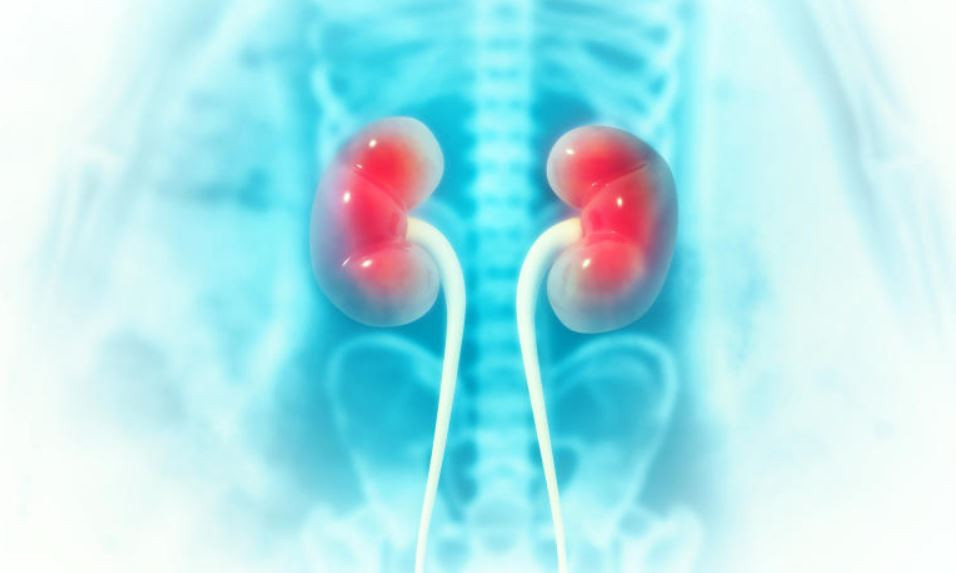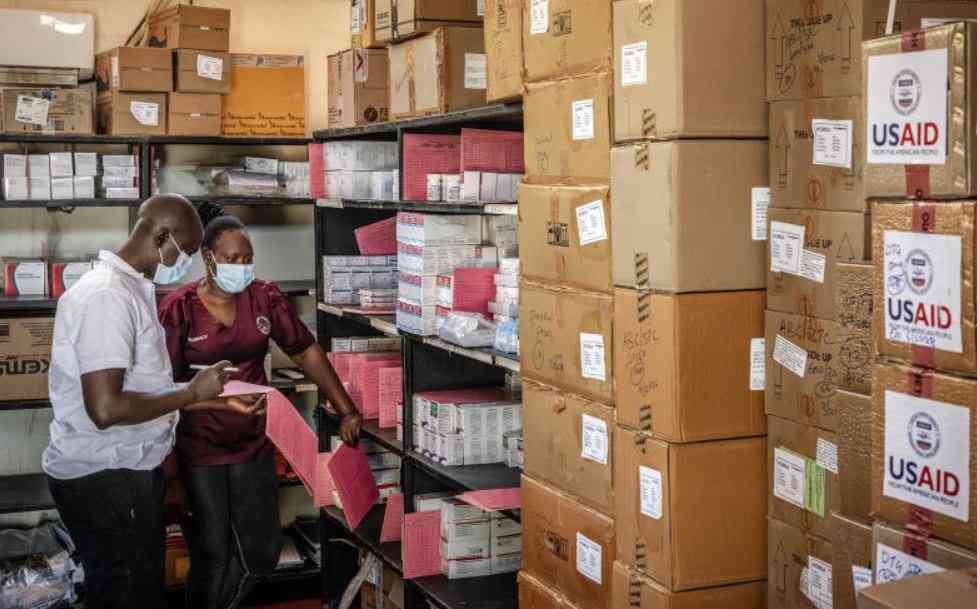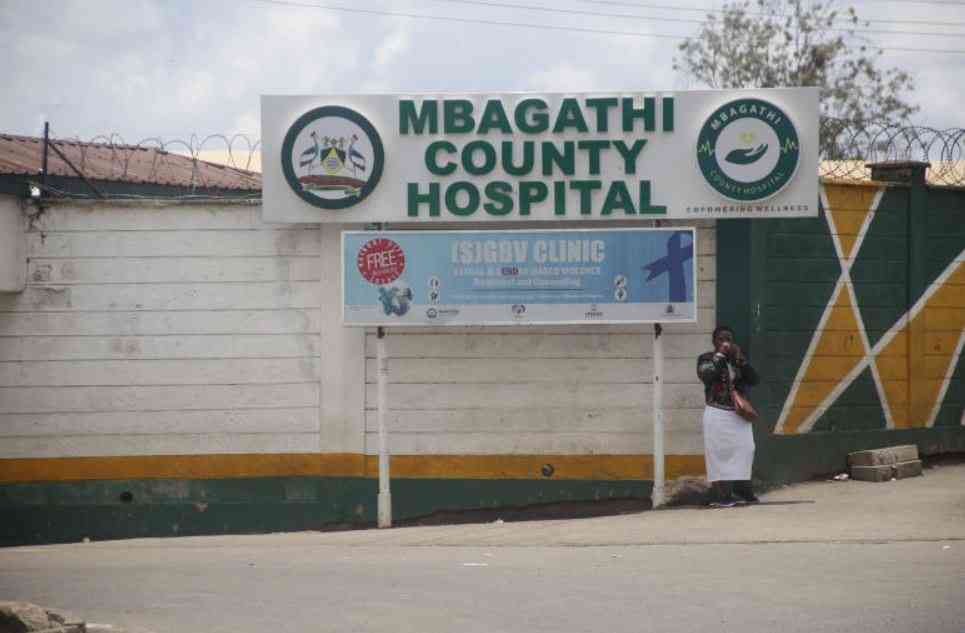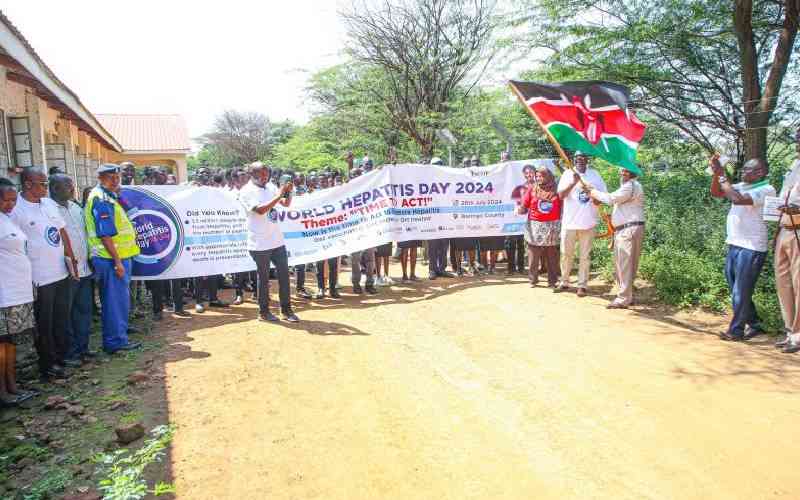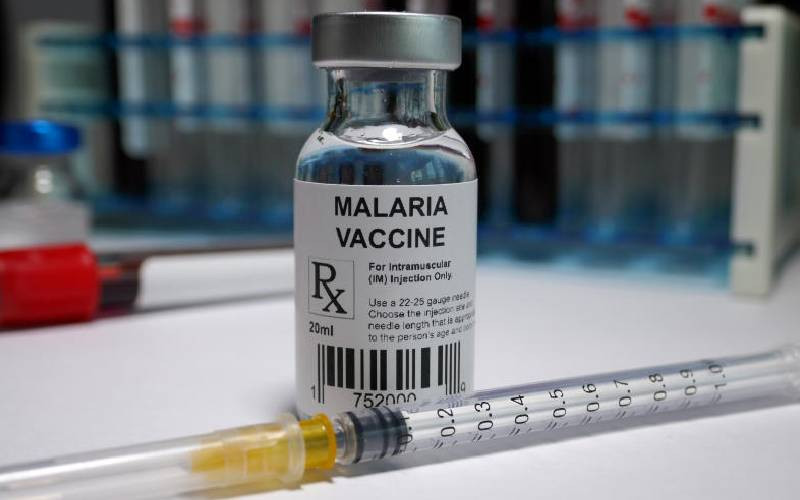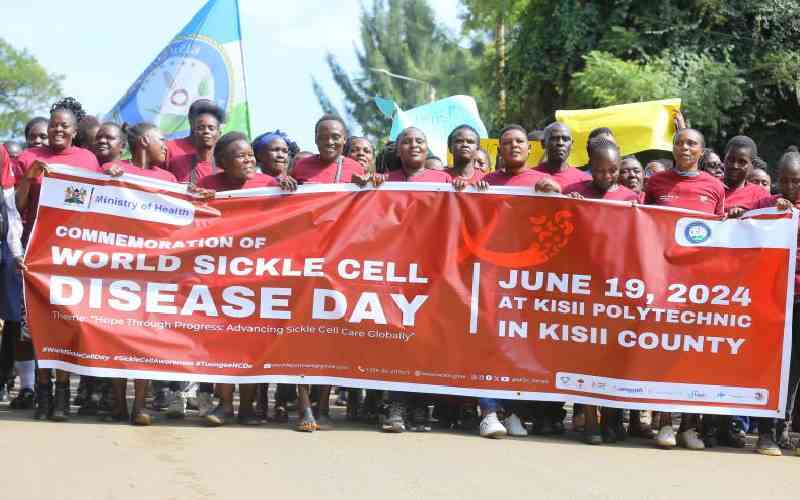
Participants march in Kisii town during celebrations to mark World Sickle Cell Disease Day, on June 19, 2024. [File, Standard]
The Nyanza region has long been known for its high malaria burden. But it now faces another serious health challenge — Sickle Cell Disease (SCD) — which has taken root, especially in Kisumu County.
SCD is a genetic blood disorder particularly common in malaria-endemic regions such as Nyanza, Western Kenya, and the Coast. These areas have historically experienced high malaria transmission rates, a factor closely linked to the prevalence of the disease.
According to Dr Dickens Lubanga, a paediatrician at Bungoma County Referral Hospital, there is a strong connection between malaria and the persistence of the sickle cell gene in these communities.
“Individuals with the sickle cell trait are more likely to survive malaria,” he explains. “The trait alters red blood cells in a way that makes it harder for the malaria parasite to grow and survive.”
This survival advantage, passed down through generations, has entrenched the sickle cell gene in populations exposed to malaria. However, while the trait can offer protection from severe malaria, it also increases the likelihood of the disease being passed on when two carriers have children.
Dr Lubanga notes that Kisumu’s high malaria prevalence is a major contributor to the increasing number of SCD cases.
- AAR slashes sickle cell test costs in accessibility drive
- Fighting pain with courage: The sickle cell anaemia warriors of Kisumu
- Young sickle cell warrior champions care for fellow patients
- New hope for sickle cell warriors as Kisumu pioneers advanced treatment
Keep Reading
“Kisumu lies close to Lake Victoria, a major breeding ground for mosquitoes. Combined with the warm, humid climate, malaria thrives here — especially in areas near the lake,” he says.
In Western Kenya, similar trends are observed. For example, in Bungoma and areas near Mount Elgon, tropical forests and climatic conditions also promote high malaria transmission. “Because malaria plays a central role, there is a direct link to the high prevalence of SCD in the region,” Dr Lubanga adds.
Another emerging factor is intermarriage between communities. Dr Lubanga explains that intermarriage between the Luo and Luhya — especially those from Mount Elgon, Kitale, Trans Nzoia, and surrounding areas — is contributing to the spread of the sickle cell gene into populations where it was previously uncommon.
“Initially, we believed that certain communities, such as the Bukusu, did not carry the sickle cell gene. But now, due to intermarriage, we are seeing cases of children born with SCD in these communities. This reflects how genetic transmission is evolving,” he says.
Still, malaria remains the most significant driver. The sickle cell gene actually adapts to protect people from severe forms of malaria when they carry the trait, as opposed to having the disease itself. This is why we see the gene persisting in malaria-endemic regions.
One of the most effective strategies in combating SCD is awareness and early testing. Dr Lubanga strongly advocates for individuals to know their sickle cell status before marriage.
“When two people who both carry the trait, or one with the disease, marry, there is a high chance of having a child with SCD. That’s how the gene continues to spread across generations,” he warns.
Dr Lubanga recalls instances where parents only discover their own status after a child suffers complications from SCD — such as a stroke or kidney damage. “Many are still unaware of their genetic status. This lack of education is a serious challenge,” he says.
“If people were properly informed and tested before choosing partners, we could significantly reduce the number of children born with SCD,” he adds.
At Bungoma County Referral Hospital, Dr Lubanga explains that for a child to inherit sickle cell anaemia, both parents must pass on the faulty gene that affects hemoglobin — the protein in red blood cells that carries oxygen.
“If only one parent carries the abnormal gene, the child becomes a carrier, known as having the sickle cell trait. Carriers typically show no symptoms but can still pass the gene to future generations,” he notes.
The disease results from a genetic mutation that alters the structure of hemoglobin. Instead of producing normal, round, flexible red blood cells, the body creates cells that are stiff, sticky, and crescent-shaped.
“These distorted cells don’t move smoothly through blood vessels. They clump together, block circulation, and trigger painful crises, frequent infections, and long-term organ damage,” he says.
To manage SCD effectively, early diagnosis is critical. The government has rolled out newborn screening programs, enabling timely treatment and intervention. Diagnostic methods include hemoglobin electrophoresis to distinguish between carriers and patients, and genetic testing to pinpoint the exact mutation.
In some cases, diagnosis may rely on symptoms and medical history. Prenatal testing — through analysis of amniotic fluid or placental tissue — is also available.
“Diagnosing the condition as early as possible, ideally at birth or in early childhood, helps prevent complications and ensures timely treatment,” says Dr Lubanga.
Treatment depends on the severity of the disease. Pain relief is essential during crises, while blood transfusions are used for patients with severe anemia, acute chest syndrome, or at risk of stroke. Lifestyle management — such as staying hydrated, avoiding environmental triggers, and maintaining a healthy diet — also plays a role in preventing complications.
Dr Lubanga stresses the importance of knowing both one’s own sickle cell status and that of a partner. “Making informed choices in partner selection can help prevent future generations from inheriting the condition,” he advises.
He also highlights the emotional and social burden of SCD. “The disease can strain families and even cause relationship breakdowns due to the stress of ongoing care and financial demands.”
In Kisumu, where approximately 2 per cent of children are born with SCD, the disease continues to claim young lives — many of them before the age of five — due to delayed or inaccessible treatment. The impact extends beyond health, placing financial and emotional strain on families who must cope with medical costs, lost income, and disrupted education.
However, there is hope. Kisumu County has made significant strides in addressing the crisis. Initiatives include the establishment of a specialized Sickle Cell Centre, partnerships to produce affordable medication, and expanded newborn screening programs.
“These efforts offer real hope — not just for survival, but for a better quality of life for families living with SCD,” says Dr Lubanga.
 The Standard Group Plc is a multi-media organization with investments in media
platforms spanning newspaper print
operations, television, radio broadcasting, digital and online services. The
Standard Group is recognized as a
leading multi-media house in Kenya with a key influence in matters of national
and international interest.
The Standard Group Plc is a multi-media organization with investments in media
platforms spanning newspaper print
operations, television, radio broadcasting, digital and online services. The
Standard Group is recognized as a
leading multi-media house in Kenya with a key influence in matters of national
and international interest.

